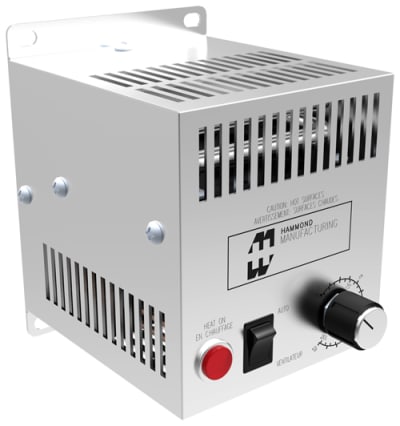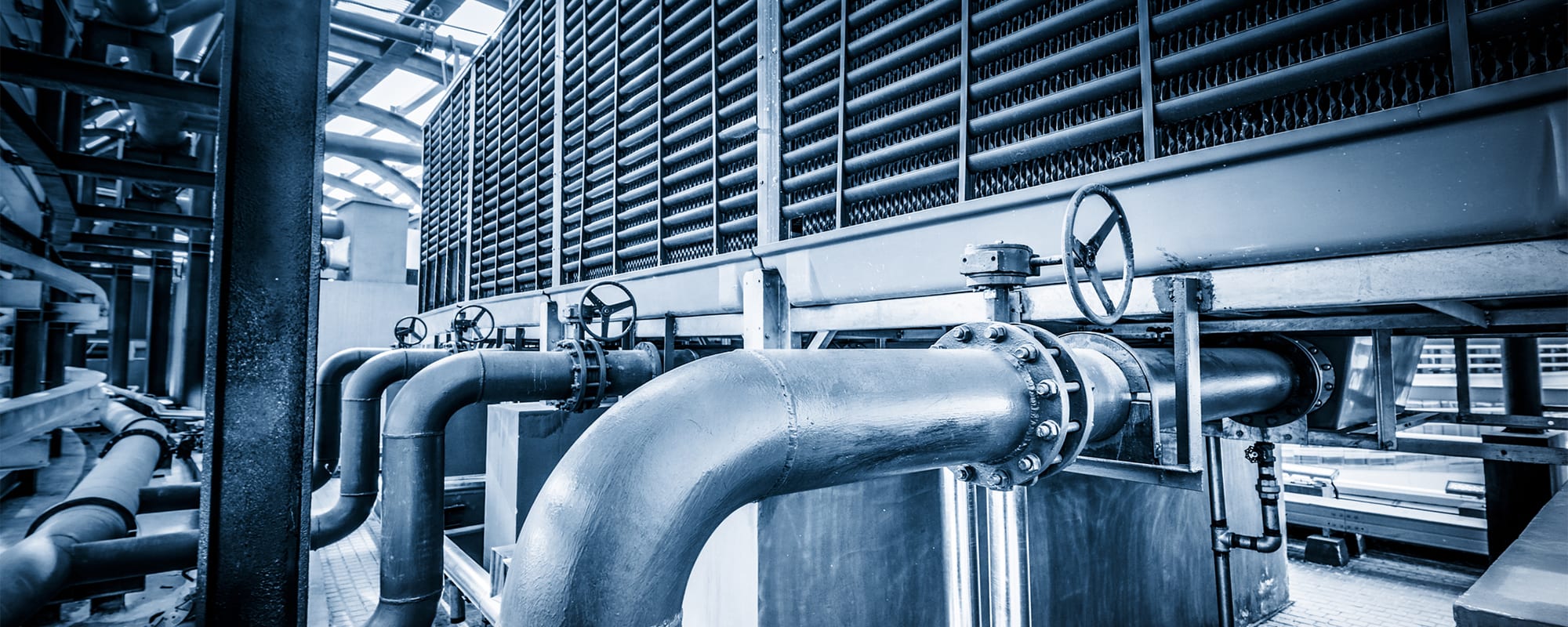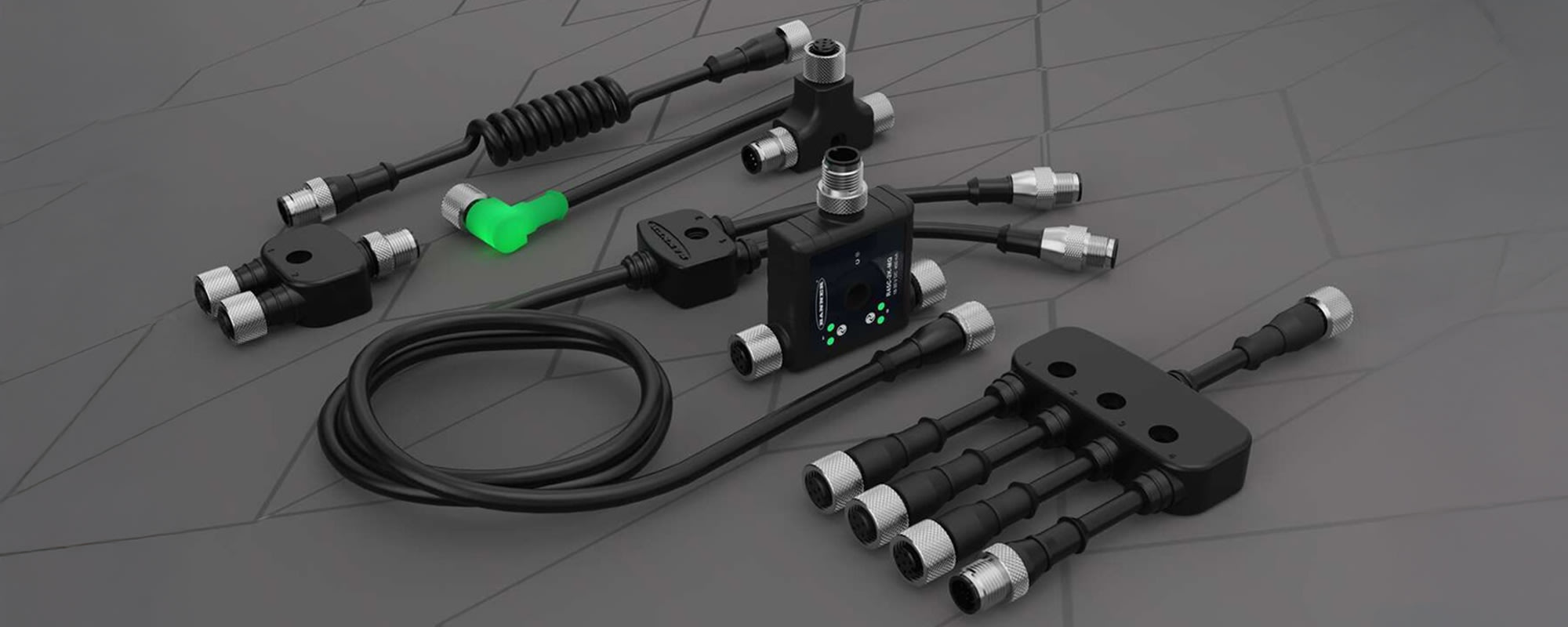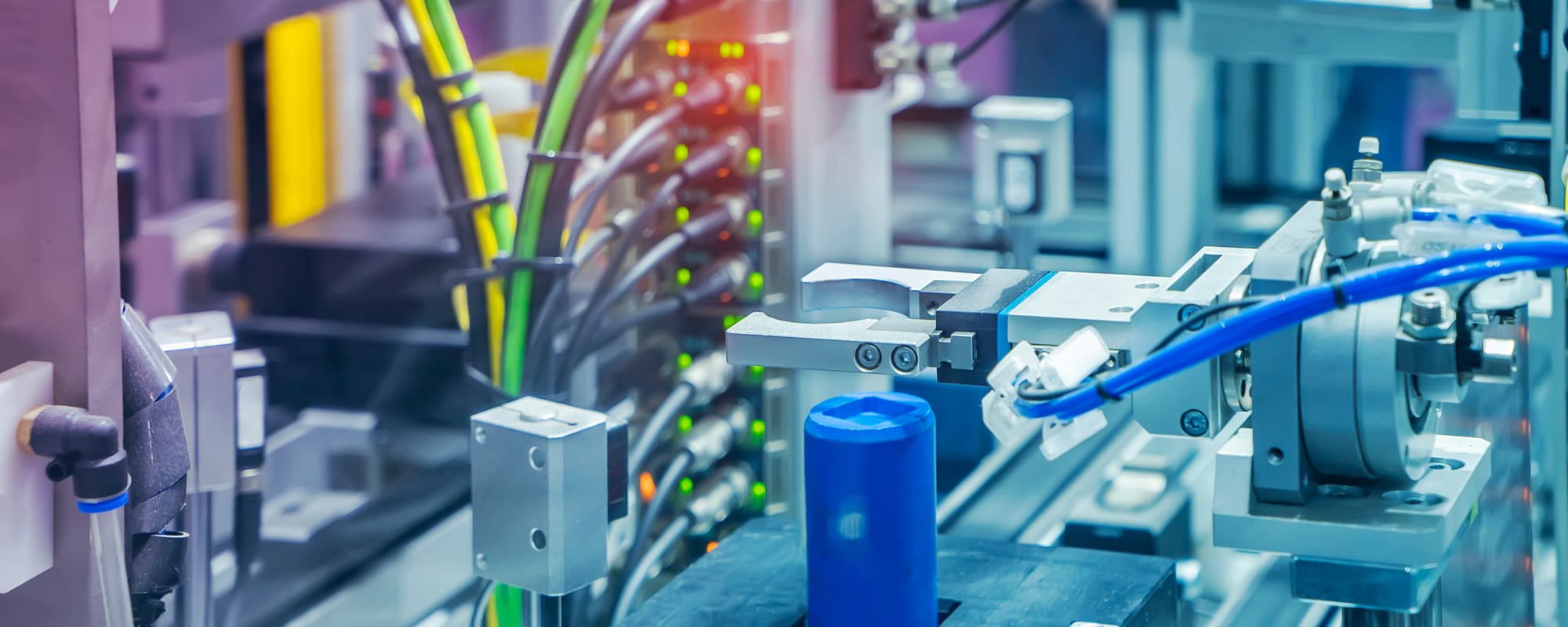Tom Ballou, Sales and Marketing Manager at Hammond Manufacturing, joined us to discuss how the right enclosure climate control solutions can keep your equipment running longer in environments with extreme temperatures and significant temperature changes.

Tom Ballou, Sales and Marketing Manager at Hammond Manufacturing, can’t help spotting industrial enclosures wherever he is — not just in factories or warehouses, but when walking around a city, amusement park, or shopping center. He’s been with Hammond Manufacturing — a trusted global supplier of transformers, racks, cabinets, and enclosures for the electrical and electronic industries — for 19 years, since he got his first post-graduate job selling modified enclosures.
Tom recently joined us to chat about the importance of climate control for industrial enclosures, share some expert insights into product selection considerations sure to lead to success, and introduce us to Hammond’s FLH Series fan heater, which is specifically designed to aid in enclosure climate control.
Hi Tom. You joined us today to talk about climate control for enclosures. So, let’s dive in. What should people know?
Enclosures are almost universally valuable across all industrial applications, including manufacturing and automation, oil and gas, power and renewable energy, waste and water management, communications, and transportation.
As many people know, excessive heat can shorten the life of electronic devices or, at the very least, cause performance to suffer. But it’s just as important to prevent moisture and condensation. When it comes to enclosures, the real goal is maintaining temperatures inside of an electrical cabinet by way of both heating and cooling.
When a company invests in incredibly expensive equipment, the enclosure is relatively cheap. However, it’s like an insurance policy — it’s an add-on that costs hundreds of dollars and is meant to protect equipment that could be worth many thousands of dollars.
Enclosures are a requirement for just about any industry but are even more important for equipment that will be outside, especially in cold temperatures and instances where the equipment is not consistently in use.
For example, electronic controls for pumping equipment turn pumps on and off and are essential in the water, oil and gas, and mining sectors. If a site in a cold environment, like Alaska or Northern Alberta, isn’t using its pumping equipment for a given time, it could get cold. And since it was likely hot inside the enclosure when the equipment was running — and hot air holds more moisture than cold air — when that hot air cools, it can cause condensation and could even frost, both of which are very harmful for the equipment.
Obviously, in an outdoor environment, we care about keeping water out of the enclosure. Outdoor-rated enclosures are typically designed with a gasket to seal out water, but that can also create issues. To maintain an ideal environment, we really need an enclosure that can breathe, or rather maintain the same air pressure as the outside to help prevent condensation. This can be done with passive ventilation, like an exhaust hole. When that isn’t feasible, it can also be done with a pressure compensation plug, which maintains pressure equilibrium and lets out the moisture but still maintains a NEMA 4X rating on an enclosure.
Indoors, we often think about controlling heat on a small scale with heatsinks or fans. For larger scale applications, it’s with industrial air conditioners. But there are also instances when heating could become important to maintain and prevent large temperature swings.
Take, for example, a renewable energy solar farm in the desert. The lack of cloud coverage can cause large temperature swings. So, climate control products play a role there as well.
What are some essential solutions for controlling the climate in an electrical enclosure?
There are a few different types of solutions that enable an enclosure to heat, cool, and breathe. The lowest cost solution is a passive solution like an exhaust hole, which is possible with an exhaust filter or a rain hood. This is adequate for applications with low-heat loads and temperature swings. From there, you can add fans or blowers, as necessary, to bring in cooler outside air while removing hot air.
The next step is an air conditioner (AC) or heat exchanger. Enclosure AC units operate on the same principles as the air conditioners in our homes — a compressor works to create an environment inside the enclosure that is cooler than the ambient air.
There are also air-to-air heat exchangers and air-to-water heat exchangers, which cool the environment by circulating liquid to remove heat. Those can be very economical if there is a ready source of cool water near the enclosure. If not, chillers are available, which can cool and circulate coolant within the heat exchanger.
There are two main types of heating inside an enclosure: radiant heaters and fan-powered heaters. Both use an electrical heating element. With radiant heaters, the heat is drawn away from the heating element with a heat sink, which radiates the heat into the air. This is mainly used for smaller enclosures that require less heat to be generated.
Fan-powered heaters can be mounted inside an enclosure. These use a fan to blow air over a heating element, which then circulates the warmer air throughout the enclosure. They typically have higher wattage and are used in larger enclosures or where the heating requirement is large.
Many climate control devices have internal thermostats, but separate thermostats can also be wired to control components without them. Normally closed thermostats, which close the circuit to turn the device on, are typically used with heaters. When they reach the desired temperature, the heater shuts off to prevent overheating. Normally open thermostats, which keep the cooling equipment off until a certain temperature is reached, are typically used in cooling applications. These use the same principle as the thermostats in our homes and offices.
What’s unique about Hammond’s portfolio of enclosure climate control solutions?
Hammond has stood for quality for over 100 years. We build and source the best equipment and materials, which allows us to offer short lead times and reliable supply chains. Our heaters are made in North America, allowing us to ship quickly from stock in most situations or build back orders very quickly, which can drastically reduce, if not eliminate, equipment downtime. Our products also offer safety features that align with regulatory requirements including agency approvals like UL recognition and safety features that any system design should consider. Additionally, all our products are offered at a competitive price with quick, high service, which we know is important in industrial manufacturing.
A lot of people know they need to address climate control somehow. The most common mistake they make is underspecifying how much power they need. Similarly, though, over-specifying can be a waste of money and space inside a cabinet, since higher power heaters are larger. To help with this, Hammond offers HSS, a tool on our website that helps customers calculate their needs based on a variety of factors — like the type of enclosure, outside environment, and temperature — to maximize and optimize their system. Customers can also call RS for help walking through these variables and identifying the best solution.
Please introduce us to Hammond’s enclosure heaters.

Hammond’s line of fan heaters is a product that really hits the sweet spot in terms of features and price. Our FLH Series fan heaters with thermostats are designed to prevent condensation or maintain minimum temperature in enclosures, are made of aluminum, which conducts heat extremely well, and are easy to use. They have important safety features, like an automatic shut-off if the unit gets too hot and a built-in thermostat, so there’s no need to wire in a separate one. They also feature a flange on the back for easy screw-mounting to a panel and meet UL standards, which means they’ve been safety evaluated and third-party tested.
FLH Series fan heaters are currently available with ratings extending from 125W to 1,300W, so the same solution can be used in enclosures of many different sizes, and 115V or 240V, so selection and installation are easy.
Performance-wise, our FLH Series fan heaters offer a high level of functionality at a super competitive price point. For the heat it generates, it’s very reliable and low cost compared to many similar products. It also offers incredible value compared to other heating methods, like radiant heaters and thermostats, and it performs better by circulating the air quickly.
Optimize your enclosure climate and equipment performance with Hammond and RS
Hammond Manufacturing offers more than 13,000 enclosures and related products through RS — including power distribution equipment, thermal management solutions, transformers, tools and hardware, wire and cable products, and rack mounting solutions — to provide customers with a convenient source for complete custom solutions.
To learn more about Hammond products available at RS, including the FLH Series fan heaters that Tom discussed here, please visit the Hammond Manufacturing RS storefront, the Hammond Manufacturing video collection on the RS YouTube page, and the Hammond Manufacturing homepage. Also check out more Hammond contributions to the RS Expert Advice series.
For assistance identifying and modifying Hammond Manufacturing electrical enclosures ideally suited for your unique application demands, please contact your local RS representative at 1.866.433.5722 or reach out to the RS technical support team.







